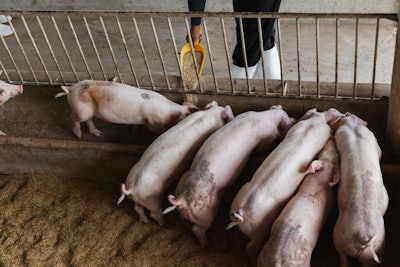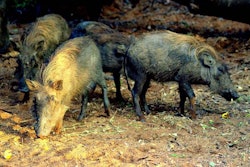
ASF has returned to Vietnam, and new cases are reported in the Philippines, Russia’s Far East, and in South Korea’s wild boar.
While the disease has only recently been reported in India for the first time, African swine fever (ASF) appears to have been present in two states for the past four months.
India’s first ever outbreak of ASF began in the northeastern state of Arunachal Pradesh on January 26, according to the national animal health agency. The next month, cases were recorded in neighboring Assam.
Up until April 23, there were 11 confirmed ASF outbreaks in village herds in the two states, according to the official report to the World Organisation for Animal Health (OIE) posted in the past week. Almost 11,000 pigs were involved in the outbreaks, in herds ranging from around 150 to 2,600 animals. Mortalities reported totaled 3,701.
ASF virus was first isolated by India’s national laboratory on May 18, according to the report, and the source of the infection is unknown. Culling of all pigs within one kilometer of each outbreak is in progress.
Just last month, local media reported the presence of ASF in India for the first time. At that time, mortality in Assam alone had reached 15,000 pigs.
Citing fears over ASF, China has this week called a halt to imports of pigs and pork products from India, reports The Hindu.
ASF returns to Vietnam
After a recent absence of new cases, ASF appears to have returned widely across Vietnam. Around 4,000 pigs have been culled, reports Vietnam Express. More than 150 communes in 19 provinces plus Hanoi have been affected.
Source of the infection is uncertain. However, the ministry of agriculture is attributing the return of the disease to smallholders buying replacement animals from uncertified sources, and selling diseased pigs, as well as to inadequate biosecurity.
Around six million pigs or 20% of Vietnam’s pig population are thought to have succumbed to ASF since the first confirmed outbreak in February 2019, according to the same source. Cases were detected in every region over the next months.
According to the ministry, the risk of further spread of the disease is currently “very high.”
China: Pork supply exceeds demand
Pork supply in China now exceeds demand, according to Xinhua. Citing official data, the news agency reported that prices are continuing to fall, reaching an average of CNY36.04 (US$5.05) per kilo in the past week.
To support the market, China’s government is reported to have released pork from frozen storage, and expanded imports.
Forecasts point to Chinese pork production reaching 48 million metric tons (mmt) this year, which would represent an increase of 5 mmt from the figure in 2019.
A week previously, the same source reported that the Chinese authorities were implementing policies to ensure pork supplies, and to aid the pig industry’s recovery. Local authorities were urged to take advantage of the financial support offered in order to restore hog production capacity to normal levels by the end of 2020.
More cases of ASF in South Korean wild boar
Eight more wild boar have tested positive for the ASF virus in South Korea, according to the latest report from the agriculture ministry to the OIE. The animals were all found in the Yeoncheon region of Gyeonggi province in the period May 20-26.
During May, the total number of ASF-infected wild boar in the country reached 600, reports Yonhap. First cases were identified in domestic pigs in September 2019, but none has tested positive for the virus since October.
New outbreak in Russia’s Far East
After 19 pigs died, ASF was confirmed recently in a backyard herd in Amur oblast, according to Russia’s agriculture ministry. In its latest report to the OIE, it reported that the remaining 13 animals had been culled.
First cases of ASF in the Far Eastern federal district were confirmed in August 2019, and the latest outbreak brings the total for this region to 93. Prior to the Amur outbreak, the most recent case reported was a single wild boar at the end of February.
ASF situation in the Philippines
No new ASF outbreaks in the Philippines have been officially reported to the OIE, but new cases continue to emerge.
Around 100 pigs have died over the past three weeks in Benguet province, reports Philippine News Agency. Authorities are supplying pig keepers with disinfectant, and urging them to improve biosecurity. First cases of ASF in the province — located on the island of Luzon — were in January, but no new cases were reported there during March and April. The latest flare-up in infections is blamed on informal pork sales and on swill feeding.
In May, the country’s animal health agency confirmed to the OIE 58 new ASF outbreaks on Luzon. Occurring between January and mid-April, they brought the total outbreaks confirmed on the island to 335. New cases have also been reported on the island of Mindanao.
View our continuing coverage of the global African swine fever situation.


















